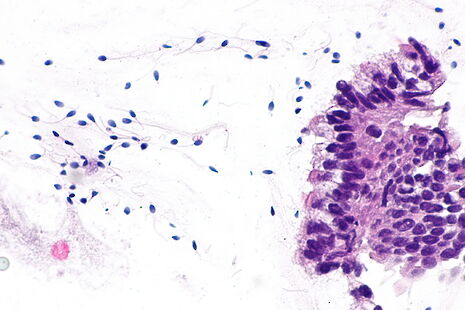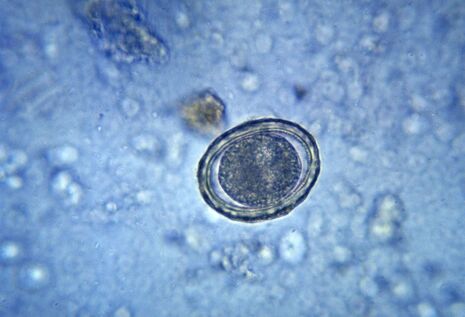Sperm from a skin cell
Navin Ramakrishna investigates a novel technology in cell biology that may change our conception of reproduction

Sperm and egg can be considered the most important cell types of the body as these are the only cells that contribute to the next generation in sexually-reproducing species. How such cells are made from an initially homogenous clump of cells that make up the early human embryo therefore presents an interesting question in developmental biology. In a desire to understand human gamete development, scientists in Cambridge and elsewhere in 2015 created models of sperm and egg development in a dish by artificially generating the very early precursors to gametes from embryonic stem cells.
More impressively, the same scientists managed to create these precursor-sperm and egg from human skin by first reverting skin cells to a stem cell state via ‘induced pluripotent stem cell technology’, then coaxing these reverted cells towards an early gamete state.
While the protocols do not allow the artificial sperm and egg to develop further from the precursor state for the time being, far more progress on this has been made using mice. In 2016, scientists in China made artificial mouse sperm, and later in the year, Japanese scientists successfully generated artificial mouse eggs completely outside a mouse. Using in vitro fertilisation techniques, much like those used in NHS fertility clinics, they proved that these artificial sperm and egg were functional, giving rise to apparently healthy mouse pups.
“Interest has also been sparked in the possibility of ‘gaybies’ for same-sex couples”
Attempts are currently underway to develop similar protocols for making mature artificial human gametes, and some are starting to consider the tantalising opportunities that applications of such a technology could confer. For example, it may be possible to make functional artificial gametes from the skin of patients with certain forms of infertility and combine this with assisted reproductive technology to allow infertile couples to have children. This has been shown to work in male mice with genetic infertility as a consequence of having an extra sex chromosome, as the case in Klinefelter Syndrome (XXY) or Jacob’s Syndrome (XYY). Japanese researchers showed this year that a proportion of the mouse skin cells discarded their extra chromosome during reversion to a stem cell state. These ‘cured’ cells were then able to generate successful artificial sperm.

Interest has also been sparked in the possibility of genetically-linked children - or ‘gaybies’ - for same-sex couples. The idea of generating eggs from male skin, or sperm from female skin, is not theoretically impossible. However, multiple biological hurdles involving removing or adding sex chromosomes will first have to be overcome, with the proof-of-principle yet to be demonstrated in mouse models. The ethics involving the manipulation of the germline this way will also have to be considered before any such technology is approved.
Even in the simpler case of generating sperm from male skin or egg from female skin, problems with their biology may exist as an artefactual consequence of growing in a dish. For example, while artificial sperm and egg have given rise to seemingly healthy offspring in mice, these offspring may be hiding defects caused by improper re-setting of their epigenetics, one of the mechanisms a cell deploys to turn genes “on” or “off”. Such flaws may only reveal themselves when the organism is environmentally-challenged, for instance in conditions of stress. This uncertainty will also contribute to one of the many ethical considerations of adopting this technique for use in human reproductive medicine.
For now, the generation of artificial early-precursor gametes offers an excellent model for the study of the basic biology of how human sperm and egg are made. Numerous hurdles will have to be first overcome before the fully-mature artificial gametes can be made from human skin, with thorough discussion and consideration of the implications before such a technique can be implemented in therapy
 Comment / Plastic pubs: the problem with Cambridge alehouses 5 January 2026
Comment / Plastic pubs: the problem with Cambridge alehouses 5 January 2026 News / Cambridge businesses concerned infrastructure delays will hurt growth5 January 2026
News / Cambridge businesses concerned infrastructure delays will hurt growth5 January 2026 News / Cambridge academics stand out in King’s 2026 Honours List2 January 2026
News / Cambridge academics stand out in King’s 2026 Honours List2 January 2026 Interviews / You don’t need to peak at Cambridge, says Robin Harding31 December 2025
Interviews / You don’t need to peak at Cambridge, says Robin Harding31 December 2025 News / AstraZeneca sues for £32 million over faulty construction at Cambridge Campus31 December 2025
News / AstraZeneca sues for £32 million over faulty construction at Cambridge Campus31 December 2025










